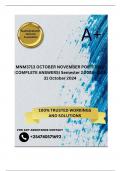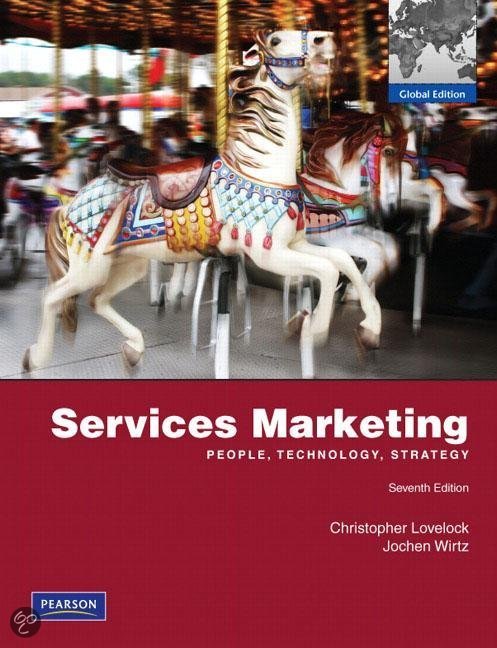,MNM3713 OCTOBER NOVEMBER PORTFOLIO
(COMPLETE ANSWERS) Semester 2 2024 - DUE 31
October 2024; 100% TRUSTED Complete, trusted solutions
and explanations.
QUESTION 1 1. Individual behaviours Describe how the
physical layout of the environment influences customer
movements and behaviors. Support your answer with a
screenshot or image of the environment. (3) 2. Social
Interactions How does the design of the space promote or inhibit
social interactions between customers and service employees, or
among customers? Support your answer with a screenshot or
image of the environment. (3) 3. Environment and cognition
What cognitive reactions do customers and employees display in
response to the environment? Support your answer with a
screenshot or image of the environment. (3) 4. Environment and
emotion Observe and describe the emotional responses
customers exhibit. For instance, are they calm, frustrated, or
happy? Support your answer with a screenshot or image of the
environment. (3) 4. Environment and physiology Are there any
visible physiological reactions to the environment? Support your
answer with a screenshot or image of the environment (3) 10
Question 1
1. Individual Behaviors
The physical layout of a retail environment significantly
influences customer movements and behaviors. For example,
, open layouts can encourage exploration and impulse buying,
while narrow aisles may limit movement and create feelings of
crowding. The placement of merchandise near the entrance often
attracts attention, leading customers to navigate through the
store in a specific pattern.
Image Example: (Include a screenshot or image of a retail
layout, showing the arrangement of aisles and product
placement.)
2. Social Interactions
The design of a space can either promote or inhibit social
interactions. For instance, seating areas in a café can encourage
customers to engage with each other or service employees.
Conversely, high barriers, such as tall shelves or partitions, may
hinder interactions. An inviting atmosphere with communal
tables can foster conversation among customers.
Image Example: (Include a screenshot or image showing
seating arrangements or areas that promote interaction.)
3. Environment and Cognition
Customers and employees display various cognitive reactions
based on their environment. A well-organized and aesthetically
pleasing space can enhance focus and decision-making. In
contrast, cluttered or chaotic environments may lead to
confusion and frustration. Signs, lighting, and color schemes
also play a role in cognitive processing.
Image Example: (Include a screenshot or image demonstrating
clear signage or organized product displays.)





